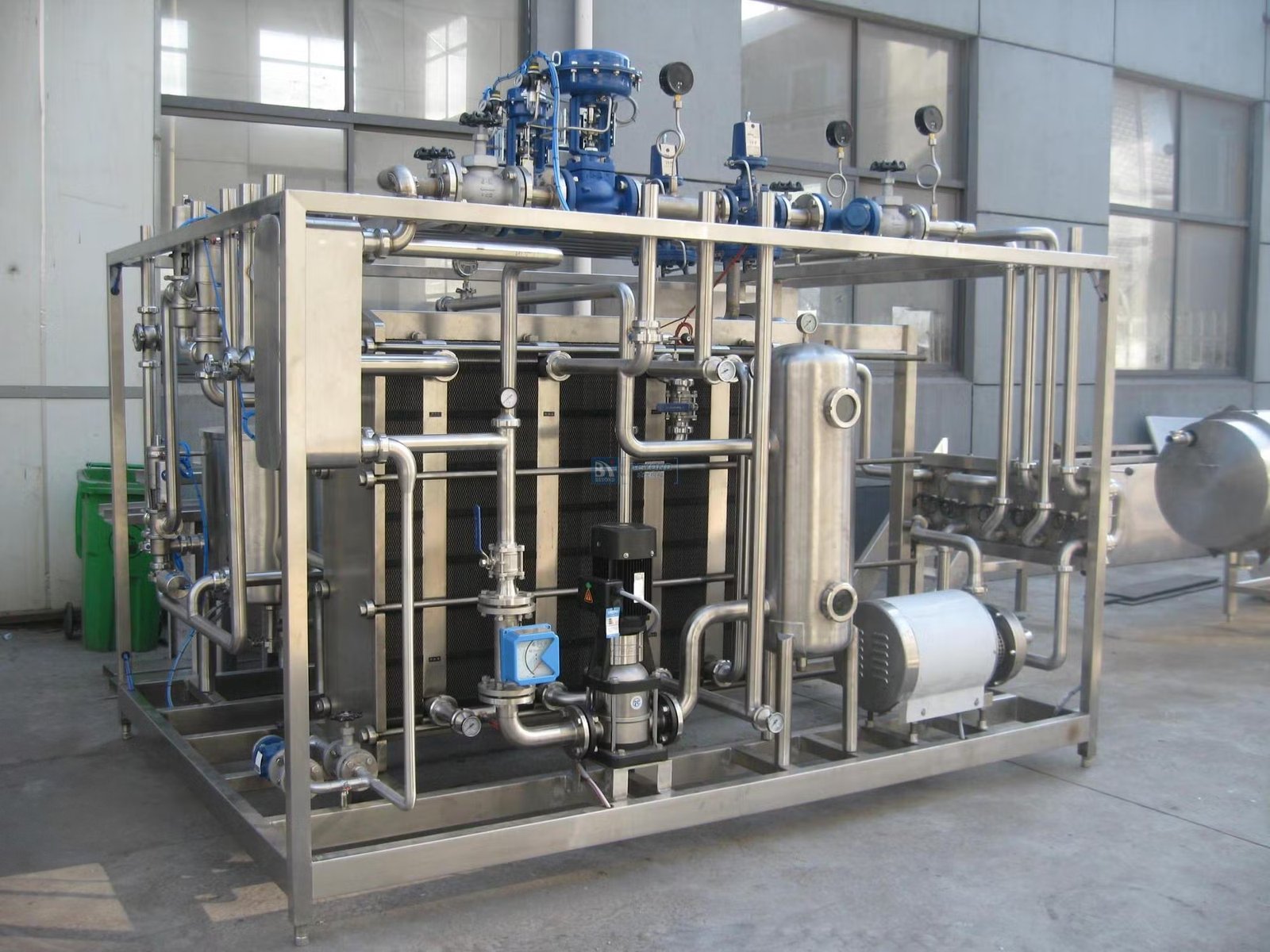
Pasteurized Milk Production
Pasteurized milk should be safe for consumption and storable for several days when kept refrigerated. The product’s taste, aroma, nutritional value, and other characteristics should show minimal deviation from the raw milk used in production.
The contaminants listed below can, in principle, be harmful to consumers:
-
Pathogenic microorganisms may be present in milk depending on the health and feeding conditions of the cow being milked, or they may contaminate the milk during milking or subsequent processing. Most of these are killed at pasteurization temperatures. However, if production conditions are not properly maintained, these organisms can recontaminate the milk.
-
Toxic substances from feed can transfer into the milk during secretion.
-
Antibiotics used in cow treatment can pass into the milk.
-
Disinfectants are used in cleaning milking containers, milking systems, storage tanks, and other equipment.
-
Bacterial toxins produced by certain microorganisms during milk storage.
-
Other toxic substances that may contaminate the milk during or after milking.
-
Radioactive substances.
Pathogenic microorganisms can be killed by heat treatment applied to milk. However, some non-pathogenic microorganisms may not be completely eliminated using this method. Therefore, dairy farms must be well-managed, and milk must be collected, transported, and stored under appropriate conditions to eliminate health risks. Continuous monitoring for microbial contamination is essential.
Most countries have legal regulations regarding shelf life and milk safety for consumption. Permissible limits for microorganisms exist (e.g., coliform bacteria count, total bacteria, yeast/mold limits, and negative alkaline phosphatase test results). To meet these requirements, raw milk should not contain excessive heat-resistant microorganisms. Pasteurization stages must be controlled (temperature and flow rate monitored), and post-pasteurization contamination should be minimized.
In pasteurized drinking milk, fat separation on the packaging surface is undesirable. Homogenization prevents fat from rising to the top. The pasteurization temperature and duration should be adjusted to prevent lipolysis. Excessive heat treatment can significantly alter the milk’s taste compared to raw milk.
An example production flow chart for pasteurized milk is provided for consumption purposes.
Heat treatment plays a crucial role in preventing the breakdown of milk fat and proteins by heat-resistant enzymes from psychrotrophic bacteria. However, according to legal regulations, the storage period for pasteurized milk is too short for these enzymes to cause significant changes. Nevertheless, noticeable alterations in product quality may indicate spoilage.


